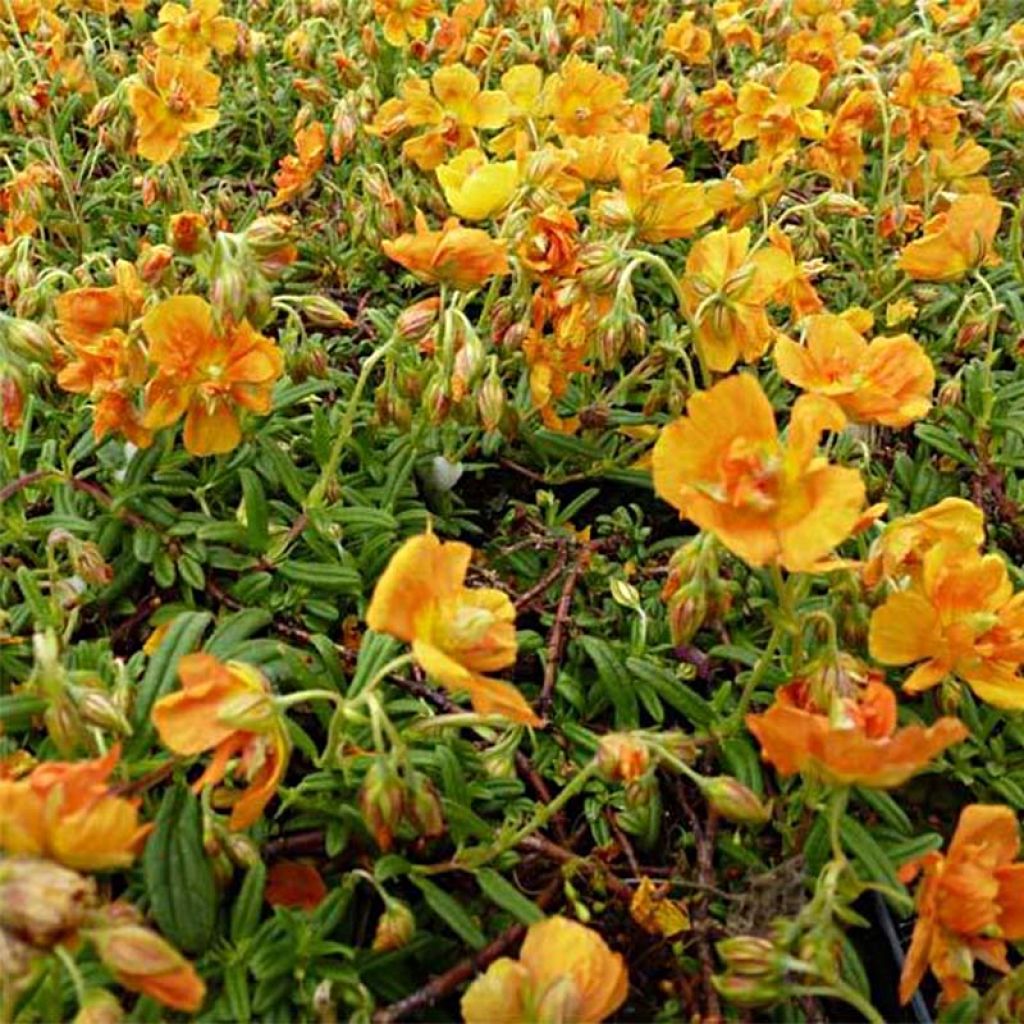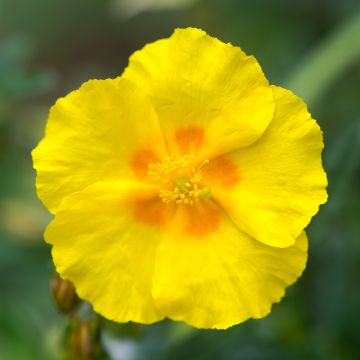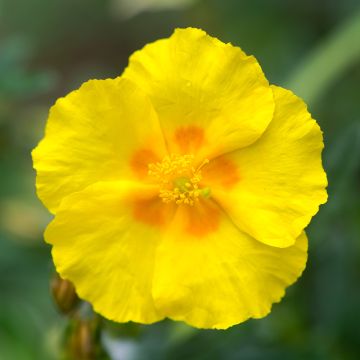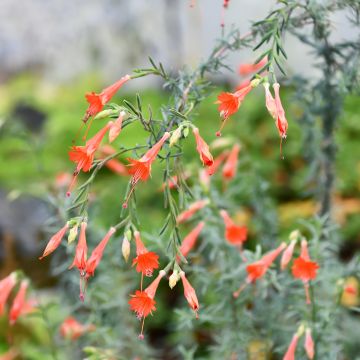

Helianthemum Orange Double - Rock Rose


Helianthemum Orange Double - Rock Rose
Helianthemum Orange Double - Rock Rose
Helianthemum apenninum x mummularium Orange Double
Rock Rose
Planted well and produced lovely yellow flowers that are very drought-resistant.
Marie, 15/06/2025
Special offer!
Receive a €20 voucher for any order over €90 (excluding delivery costs, credit notes, and plastic-free options)!
1- Add your favorite plants to your cart.
2- Once you have reached €90, confirm your order (you can even choose the delivery date!).
3- As soon as your order is shipped, you will receive an email containing your voucher code, valid for 3 months (90 days).
Your voucher is unique and can only be used once, for any order with a minimum value of €20, excluding delivery costs.
Can be combined with other current offers, non-divisible and non-refundable.
Home or relay delivery (depending on size and destination)
Schedule delivery date,
and select date in basket
This plant carries a 12 months recovery warranty
More information
We guarantee the quality of our plants for a full growing cycle, and will replace at our expense any plant that fails to recover under normal climatic and planting conditions.

Would this plant suit my garden?
Set up your Plantfit profile →
Description
Helianthemum 'Orange Double' enriches the range of Helianthemums with its beautiful and long double flowering in a soft and warm color. Its small flowers bloom from May to September, on delicate foliage of a beautiful ash green that is evergreen if the winter is not too cold. This subshrub, hardy in well-drained soil, forms lovely ground cover for sunny areas of the garden such as a rockery or the top of a wall. It is a good plant for a dry or mineral garden, and will also look wonderful in a container on the terrace.
Belonging to the family of Cistaceae, the 'Orange Double' Helianthemum is a recent horticultural hybrid resulting from the cross-breeding of H. apenninum, native to southern Europe, and H. mummularium, widespread in Europe and Turkey. Like other varieties of the genus, 'Orange Double' loves limestone, rocky, sandy soils and the sun. It forms a very low-growing, spreading and dense subshrub, reaching a cushion height of 15 cm (6 in) and a width of 30 to 40 cm (12 to 16 in). Its more or less evergreen foliage is composed of tiny linear leaves, of a fairly light grey-green, slightly shiny, which highlights its abundant and bright blooms in light orange with a small yellow centre. From May-June to August-September, it is covered with a multitude of small flowers with a diameter of 2.5 cm (1 in), in double cups, slightly crumpled, adorned with a bouquet of golden to orange stamens. Helianthemum means "flower of the sun" in Greek, an appropriate name for these flowers that only open in the sun. Its delicate little blooms do not last long, but are constantly renewed.
Helianthemum is the ideal plant to enhance a rocky garden, a sunny slope, cascading on a wall, or in paving. It also thrives well in pots or containers for terraces. It can also be considered for the creation of green walls and green roofs. Combine it with other rock plants (Erigeron, Creeping Gypsophila, Mont Olympe St. John's Wort), but also with perennials such as lavender, dryland iris, sedums, or perennial geranium macrorrhizum. Its flowers blend delicately with the grey foliage of stachys, dwarf artemisia or silver basket.
Report an error about the product description
Helianthemum Orange Double - Rock Rose in pictures




Flowering
Foliage
Plant habit
Botanical data
Helianthemum
apenninum x mummularium
Orange Double
Cistaceae
Rock Rose
Cultivar or hybrid
Other Helianthemum
View all →Planting and care
Easy to grow and low maintenance, 'Orange Double' Helianthemum enjoys being planted in full sun, in a neutral or limestone soil that is perfectly drained, even occasionally dry and rich in gravel or sand. Not tolerating stagnant moisture in winter, it will be necessary - especially in cold and wet climates - to lighten the soil during planting by adding gravel, compost, and coarse sand to improve drainage. Helianthemum is a hardy plant that can withstand temperatures ranging from -10 to -20°C (14 to -4 °F) depending on the variety. It tolerates drought quite well and only requires regular watering (without excess) during the first year after planting; afterwards, the plant can manage on its own. At the end of flowering, pinch off the faded flower stalks and foliage to encourage an autumnal rebloom. Lightly trimming the clump with hedge shears can be done after flowering to maintain dense vegetation and prevent the centre from becoming bare. When young, make sure to protect it from any weeds that will deprive it of moisture or block the sunlight essential for its health.
Planting period
Intended location
Care
-
, onOrder confirmed
Reply from on Promesse de fleurs
Similar products
Haven't found what you were looking for?
Hardiness is the lowest winter temperature a plant can endure without suffering serious damage or even dying. However, hardiness is affected by location (a sheltered area, such as a patio), protection (winter cover) and soil type (hardiness is improved by well-drained soil).

Photo Sharing Terms & Conditions
In order to encourage gardeners to interact and share their experiences, Promesse de fleurs offers various media enabling content to be uploaded onto its Site - in particular via the ‘Photo sharing’ module.
The User agrees to refrain from:
- Posting any content that is illegal, prejudicial, insulting, racist, inciteful to hatred, revisionist, contrary to public decency, that infringes on privacy or on the privacy rights of third parties, in particular the publicity rights of persons and goods, intellectual property rights, or the right to privacy.
- Submitting content on behalf of a third party;
- Impersonate the identity of a third party and/or publish any personal information about a third party;
In general, the User undertakes to refrain from any unethical behaviour.
All Content (in particular text, comments, files, images, photos, videos, creative works, etc.), which may be subject to property or intellectual property rights, image or other private rights, shall remain the property of the User, subject to the limited rights granted by the terms of the licence granted by Promesse de fleurs as stated below. Users are at liberty to publish or not to publish such Content on the Site, notably via the ‘Photo Sharing’ facility, and accept that this Content shall be made public and freely accessible, notably on the Internet.
Users further acknowledge, undertake to have ,and guarantee that they hold all necessary rights and permissions to publish such material on the Site, in particular with regard to the legislation in force pertaining to any privacy, property, intellectual property, image, or contractual rights, or rights of any other nature. By publishing such Content on the Site, Users acknowledge accepting full liability as publishers of the Content within the meaning of the law, and grant Promesse de fleurs, free of charge, an inclusive, worldwide licence for the said Content for the entire duration of its publication, including all reproduction, representation, up/downloading, displaying, performing, transmission, and storage rights.
Users also grant permission for their name to be linked to the Content and accept that this link may not always be made available.
By engaging in posting material, Users consent to their Content becoming automatically accessible on the Internet, in particular on other sites and/or blogs and/or web pages of the Promesse de fleurs site, including in particular social pages and the Promesse de fleurs catalogue.
Users may secure the removal of entrusted content free of charge by issuing a simple request via our contact form.
The flowering period indicated on our website applies to countries and regions located in USDA zone 8 (France, the United Kingdom, Ireland, the Netherlands, etc.)
It will vary according to where you live:
- In zones 9 to 10 (Italy, Spain, Greece, etc.), flowering will occur about 2 to 4 weeks earlier.
- In zones 6 to 7 (Germany, Poland, Slovenia, and lower mountainous regions), flowering will be delayed by 2 to 3 weeks.
- In zone 5 (Central Europe, Scandinavia), blooming will be delayed by 3 to 5 weeks.
In temperate climates, pruning of spring-flowering shrubs (forsythia, spireas, etc.) should be done just after flowering.
Pruning of summer-flowering shrubs (Indian Lilac, Perovskia, etc.) can be done in winter or spring.
In cold regions as well as with frost-sensitive plants, avoid pruning too early when severe frosts may still occur.
The planting period indicated on our website applies to countries and regions located in USDA zone 8 (France, United Kingdom, Ireland, Netherlands).
It will vary according to where you live:
- In Mediterranean zones (Marseille, Madrid, Milan, etc.), autumn and winter are the best planting periods.
- In continental zones (Strasbourg, Munich, Vienna, etc.), delay planting by 2 to 3 weeks in spring and bring it forward by 2 to 4 weeks in autumn.
- In mountainous regions (the Alps, Pyrenees, Carpathians, etc.), it is best to plant in late spring (May-June) or late summer (August-September).
The harvesting period indicated on our website applies to countries and regions in USDA zone 8 (France, England, Ireland, the Netherlands).
In colder areas (Scandinavia, Poland, Austria...) fruit and vegetable harvests are likely to be delayed by 3-4 weeks.
In warmer areas (Italy, Spain, Greece, etc.), harvesting will probably take place earlier, depending on weather conditions.
The sowing periods indicated on our website apply to countries and regions within USDA Zone 8 (France, UK, Ireland, Netherlands).
In colder areas (Scandinavia, Poland, Austria...), delay any outdoor sowing by 3-4 weeks, or sow under glass.
In warmer climes (Italy, Spain, Greece, etc.), bring outdoor sowing forward by a few weeks.



















































